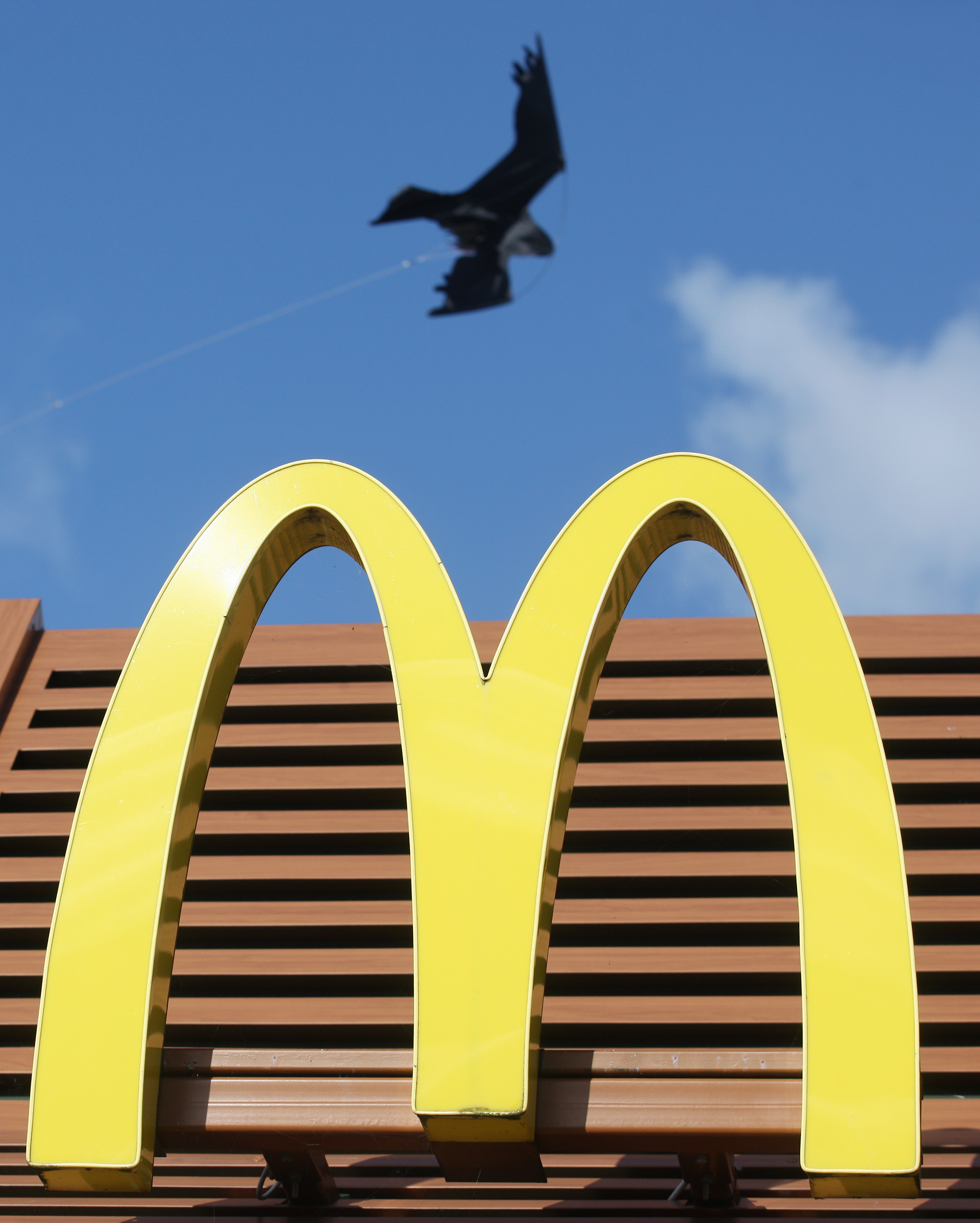THERE’S something strange flying high above McDonald’s at Westwoods. Is it a bird? Is it a plane? No, it’s a hawk-shaped kite designed to scare away seagulls and other sky-borne nuisances.
Graciously circling overhead like birds of prey on the hunt, two faux hawks are simply attached to a line and pole, which is mounted to the roof of the fast food restaurant, rising and falling with every change in the wind.
Passers-by could be forgiven for being startled when the kite is whipped into action by a gentle breeze that helps keep the seagulls at bay (pardon the pun). Historically, seagulls have lived near the sea or sometimes beside rivers and reservoirs, but they have increasingly been found in inland towns and cities where they are often viewed as pests by the urban population.
The problem is made worse by the fact that the main culprit is the herring gull – one of the largest and most aggressive members of the gull family on the island of Ireland.
One reason for the growth in the number of gulls is the relative safety for the birds of perches atop man-made structures, where gulls commonly build their nests out of the reach of predators.
Another reasons that gulls have moved inland is the abundant supply of food waste, which helps sustain them. No surprise, then, that they might flock to supermarkets, shops and food outlets like McDonald’s.
While retailers, local government authorities, and restaurants have been keen to limit the birds’ access to food waste by using lidded bins and encouraging proper disposal, the urban gull perseveres.
The daring and intelligent birds have been known to swoop down on humans to snatch food from their hands – an obvious danger when you’re trying to eat a Big Mac. While the law makes it illegal to recklessly injure or kill any gull or damage or destroy an active nest or its contents, it does, in the interest of health and safety, make allowances for certain control measures, and there are few more clever – or more humane – than the kite hawk.
The urban gulls have been the subject of human concern leading, in some cases, to lethal methods of control. However, given that they are a red-list threatened species, the Royal Society for the Protection of Birds questions the use of lethal control as a means of dealing with the issue.
A less aggressive method of control – like that employed by McDonald’s at Westwoods – is just one solution that may help our co-habitation. At the very least, your McNuggets are somewhat safer.






